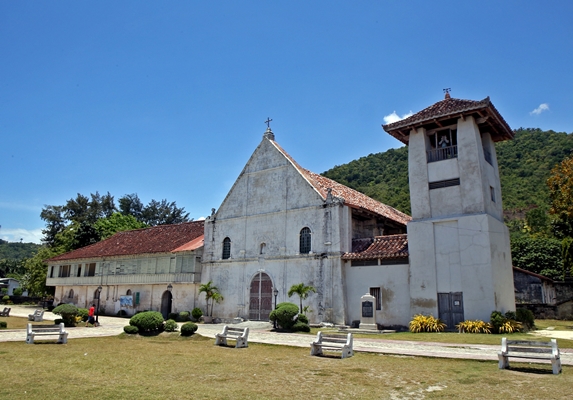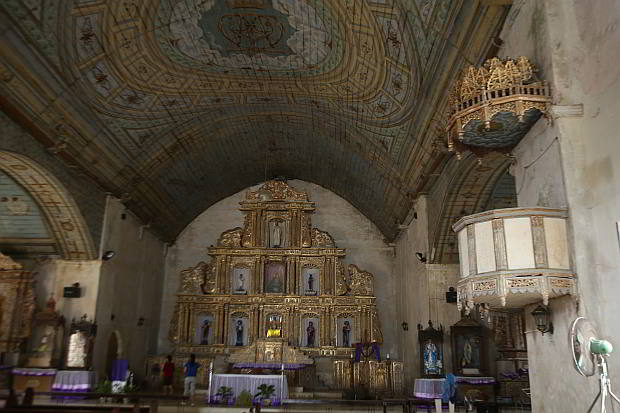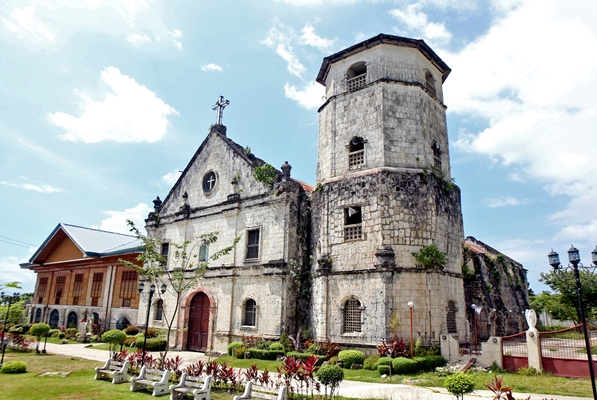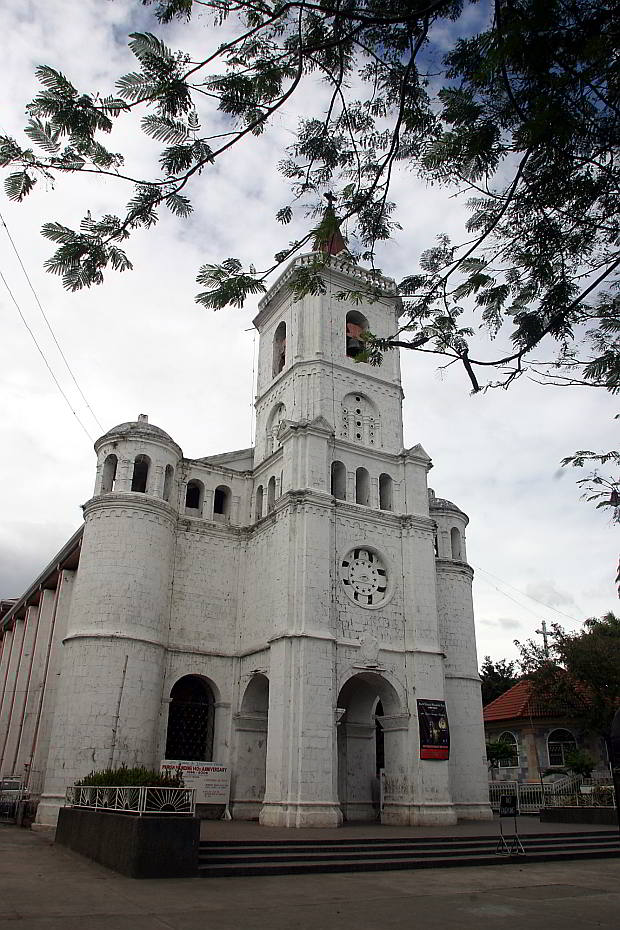(Second Part)
Patrocinio de Sta. Maria Parish
Boljoon, Cebu
The church, built in 1794, is the oldest among the remaining original stone churches in Cebu and one of the Baroque churches of the country. Despite sustaining minor damage and cracks, it survived the 7.2-magnitude earthquake that hit Cebu and Bohol in October last year.
The National Historical Institute declared it a National Historical Landmark in 1999 and the following year, it became a national cultural treasure as declared by the National Museum.
Its old and intricate carvings and beautifully painted wooden ceiling are an integral part of its charm.
A wooden retablo intricately covered with gilding seems to glow when viewed from the church’s entrance.
The Boljoon parish church’s grounds are quite extensive. On the right side is an imposing belfry , which also sustained minor cracks during the earthquake.
San Miguel Archangel Parish
Samboan, Cebu
The coral stones that serve as the walls of this century-old church remain intact with only the bell tower at the right side of the church incurring damage from the Oct. 15 earthquake.
Penitents have two options for the stations of the cross. There are life-sized whitewashed representations of the way of the cross around the sprawling church grounds which overlook the sea.
The seal of the Spanish king above the portal shows that the church was constructed using funds from the royal treasury.
At the left side of the church ground is the Escala de Jacob or the Jacob’s ladder, a 147-step stone staircase.
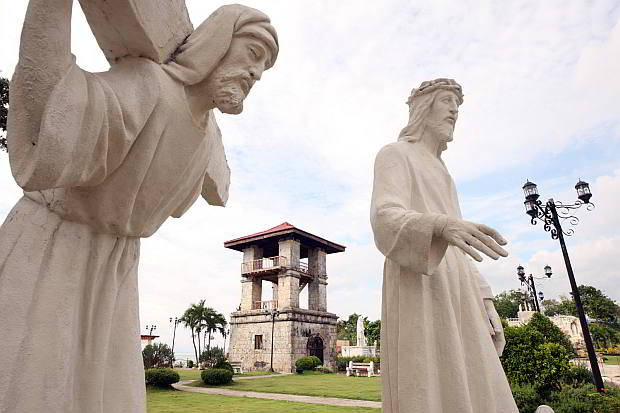
Life-size station of the cross in Samboan church grounds. On the background is the Escala de Jacob which serve as a lookout for Moro raids. (CDN PHOTO/ TONEE DESPOJO)
Built in 1878, it leads to the old watchtower near the church where one can have a beautiful view of the Tañon Strait.
Sto. Tomas de Villanueva Parish
Pardo, Cebu City
Built in 1863, this church is one of the more fortunate survivors of the earthquake as its coral stone walls sustained only minor cracks.
It was designed by Spanish engineer-architect, Domingo de Escondrillas, who chose a Byzantine style for the structure because he wanted it to be unique from other churches.
It has a towering belfry set in the middle of its façade and a balcony enclosed by stone balustrades can be seen at the topmost part of the structure. The belfry is flanked by two other less imposing towers.
The interior of the church, however, has been modernized as most of the elements inside the church have been renovated.
As in most churches, the stations of the cross are found mounted on the walls inside the church.
RELATED STORY
First part of Cebu’s heritage churches for Visita Iglesia
Disclaimer: The comments uploaded on this site do not necessarily represent or reflect the views of management and owner of Cebudailynews. We reserve the right to exclude comments that we deem to be inconsistent with our editorial standards.
